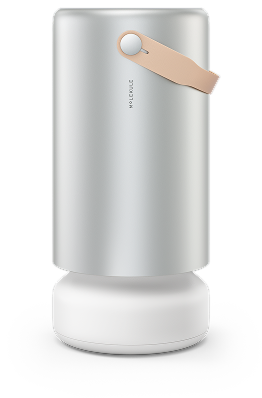Allergies are a result of having an immune system capable of defending against trillions of possible invaders. Our immune systems are finely tuned to identify threats among the cast-off skin cells, fragments of fungus, and the rest of the rain of biological matter in everyday life. It is complicated to keep track of literally every form of life on the planet, and immune systems can make mistakes and attack targets that should be left alone.
There’s a very specific type of mistake the immune system makes that results in an allergy, but it can be in regard to almost any stimulus. Let’s take a look at some of the most unusual things that a minority of people are allergic to. In most of these cases, it’s not the actual substance that causes the allergy but rather how it changes the molecules that make up our cells and tissues.
What is an allergy?
An allergic reaction refers to a very specific process in your body involving antibodies, which are also known as immunoglobulins. There are many types of antibodies, and each one is tuned to detect and set up a reaction for a different kind of invader. Some may target viruses while others intestinal parasites, or venom, or literally any other possible threat. Most antibodies go unused, but those that do are replicated by our immune systems to acquire better immunity. The process is extremely complex, as you can see below.

The incredibly complex process of acquiring an allergy. A) The allergen enters the body. B) An Antigen-presenting cell takes up the allergenic molecule and presents the unique allergens on its surface. The activated antigen presenting cell then migrates to the nearest lymph node. C) T cells recognize the allergen, which differentiate into Th2 cells. D) B cells recognize the allergen through the Th2 cell. E) B cells are activated by allergens. F) B cells differentiate into plasma cells, at which point they would actively synthesize antibodies of IgE from the allergen. G) The IgE antibody that now recognizes the allergen molecule, circulates around the body and attaches to mast and basophil cells. H) When the allergen re-enters the body at a later time it binds to the IgE resulting in a release of chemicals. One of these chemicals is histamine which causes the 5 symptoms of allergic inflammation: heat, pain, swelling, redness and itchiness. Another mediator is IL-4, which affects more B cells to differentiate into plasma cells and produce more IgE and thus the vicious cycle continues.
The problem that creates allergies involves Immunoglobulin E, or IgE, which usually is good for stopping parasites. IgE, among other things, can trigger the release of histamine, which is a messenger chemical that tells our body’s cells to inflame, our noses to run, and our eyes to water, all of the classic symptoms of an allergic reaction. Histamine is held inside mast cells, a type of white blood cell, and IgE rides on the outside of mast cells as a trigger. When the IgE touches pollen, pet dander, or whatever allergy it represents, it tells the mast cells to dump histamine into the blood. Because the immune system is adaptive, it can increase this process more and more over time with repeated allergy attacks, making ever more IgE sensitive to allergy triggers and more mast cells with more histamine.
The allergy build-up can lead to what is known as the atopic march, which is when allergies defined by specific symptoms start to cross into each other. Asthma, eczema (allergic skin rashes), hay fever, and eye irritation are symptoms that may start to occur separately and to different allergens. After a body is full of IgE and sensitive mast cells, what used to be just a rash can start to cause a runny nose and eventually trigger asthma, or any combination of allergic symptoms.
The most serious response to allergies is called anaphylaxis, and can lead to serious injury and death. If someone experiences more than one of any of the following as a result of exposure to a known allergen they need medical attention:
- Signs of low blood pressure like lightheadedness, weak pulse, paleness, fainting, dizziness, or confusion
- Breathing problems like shortness of breath, trouble breathing, swollen throat, hoarse voice, chest tightness, or tongue swelling
- Respiratory problems like trouble swallowing, coughing, wheezing, sneezing, or runny nose
- Skin reactions like hives, a rash, itchy or swollen lips, or itchy, swollen and red skin anywhere on the body
- Cardiac problems like rapid heartbeat with trouble breathing
- Gastrointestinal problems like cramping, vomiting, or diarrhea

Medical attention for anaphylaxis ALWAYS requires the hospital. Epinephrine injection pens, or epipens (shown above), are excellent ways to stop anaphylaxis for 20 or 30 minutes, after which it could start right up again without proper treatment. When going to the hospital for anaphylaxis, it is vital to know the name of the allergy trigger for proper treatment.
If you have overactive allergies, take antihistamines before getting allergies, once histamine sends the allergy attack message it’s too late. Also visit your doctor to get a referral to an allergist. New immunotherapies are constantly being developed, which can help to halt and even reverse the progression of allergies and the atopic march by shifting the sensitivity to other immunoglobulins that don’t trigger allergies.
What is not an allergy
Allergies are defined by the IgE, mast cell, and histamine process, which is also called a type 1 hypersensitivity of the immune system. There are several other hypersensitivities (types 2 through 4) involving other immunoglobulins. Most autoimmune diseases, like type 1 diabetes, lupus, and arthritis, fall into these other categories and need something considerably different than antihistamine to help. Transplant organ rejection, for example, is not an allergy or an autoimmune disorder, falls into the type 4 hypersensitivity group, and requires very specific immunosuppressants to manage.
An intolerance is also not an allergy. Lactose intolerant people, for example, lack an enzyme called lactase that digests the lactose in milk. When someone who doesn’t have lactase consumes lactose, the lactose is instead digested by bacteria in the gut, which causes a lot of painful gas and diarrhea. Because there’s no IgE or histamine involved, lactose intolerance is not an allergy.
These following “allergies” involve the immune system, but not all may be mediated by IgE and histamine, which means they’re hypersensitivities instead of allergies.

Allergic to touch
Dermatographia, or allergy to touch, involves raised welts wherever a person’s skin has been even lightly scratched. This allergy has been more or less proven to be an overactive response to skin damage, and actually uncommon, affecting 2% to 5% of people. Ordinarily histamine is released in response to any damage, there are antigens inside cells that will trigger IgE on mast cells. People who have dermatographia experience this reaction much quicker and easier than the rest of us, though it only lasts 15 to 30 minutes.
Dermatographia isn’t largely associated with atopy, though people who already have atopy may get worse dermatographia. It’s associated with stressful life events and stress in general, so if it suddenly shows up without any other obvious changes stress could be culprit. Because it’s mostly harmless, there are even artists with dermatographia who draw on their skin.

Allergic to money
No, this doesn’t refer to your cousin living at his mom’s house in his fourteenth year of community college. Though this imaginary cousin may never find out, both coins and paper money contain quite a few allergens.
Nickel is a very common allergy and many if not most coins contain at least some nickel. Individual atoms of nickel aren’t complex enough to be recognized by an antibody, but they react with proteins in the skin and create a new nickel-protein product that can be recognized by IgE antibodies and create an allergy.
Paper money has been everywhere and is very likely to be covered in allergens of all sorts like mold and dust, but also contains dyes that have been known to cause allergic reactions. Dyes and their component binders are often made from the most protein-rich parts of plants, which are the most likely to cause allergies, like peanuts and soy.

Allergic to exercise
Jokes about wayward cousins aside, some people find their immune systems react when they try to exercise, and the results can be very serious. Exercise-induced anaphylaxis comes in two basic forms- with food (food-dependent exercise-induced anaphylaxis or FDEIA) and without food (just EIA).
FDEIA can be avoided by just not eating before physical activity. Keep in mind that this reaction is much different than feeling nauseous from working out on a full stomach, instead the body flushes with histamine and could go into anaphylaxis, which is much worse than vomiting. EIA is thought to represent as many as 15% of anaphylaxis cases. Some immune therapies are proving effective, as well as certain drugs that prevent the release of histamine (which is different from antihistamines, which block it after it’s released).

Allergic to water
We are considerably more than half water, so it is difficult to understand how someone could have an allergy to water, or aquagenic urticaria, and still be alive. The number of confirmed cases is only 50 in all of medical history, and the doctors who have studied it seem more convinced it is a type of autoimmune reaction brought on by water than a reaction to the water itself. Also, salt-water aquagenic urticaria seems more common, so the presence of dissolved substances is also a probable culprit.

Allergic to sunlight
This is completely different from being sensitive to sunburn, and there is more than one way your histamine can get released from exposure to the sun. We wear sunscreen lotion because the sun’s potent UV light causes chemical changes in and on the surface of our cells. In some cases, the immune system notices this change or is affected by it.
Actinic prurigo and polymorphous light eruption both involve raised bumps after exposure to a day or so of sun. Their causes aren’t clear but they seem to affect women more than men.
Solar urticaria is the cousin of water allergy, and involves a painful red rash within minutes of sun exposure. The causes also aren’t totally clear and medical researchers are looking for what is changed by the sun and how to cause this reaction. Oddly, something changed by longer wavelengths of light cancels out what is changed by shorter wavelengths.
Photoallergic reaction is different from the other three and occurs when a substance like makeup is changed by the sun, and the immune system reacts to this new chemical. It can also occur after taking certain kinds of anti-inflammatory drugs.
Photo of woman on the beach by Kampus Production and header photo of woman wiping her nose by Cottonbro Studios, both on Pexels. Photo of water droplet by Jose Manuel Suarez and photo of sunlight by Charles R. Benedict on Wikimedia Commons.







